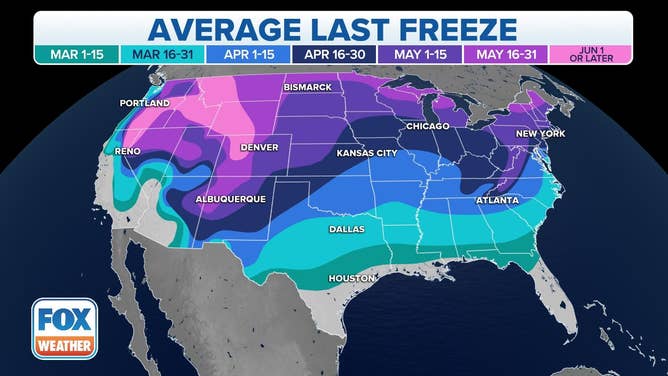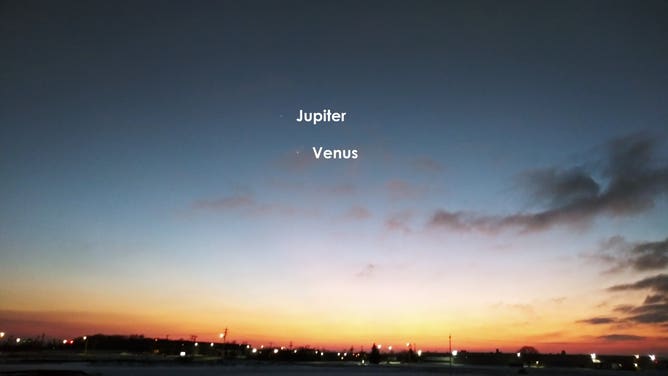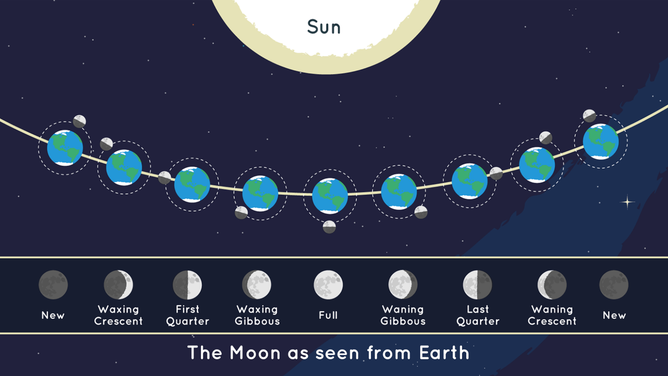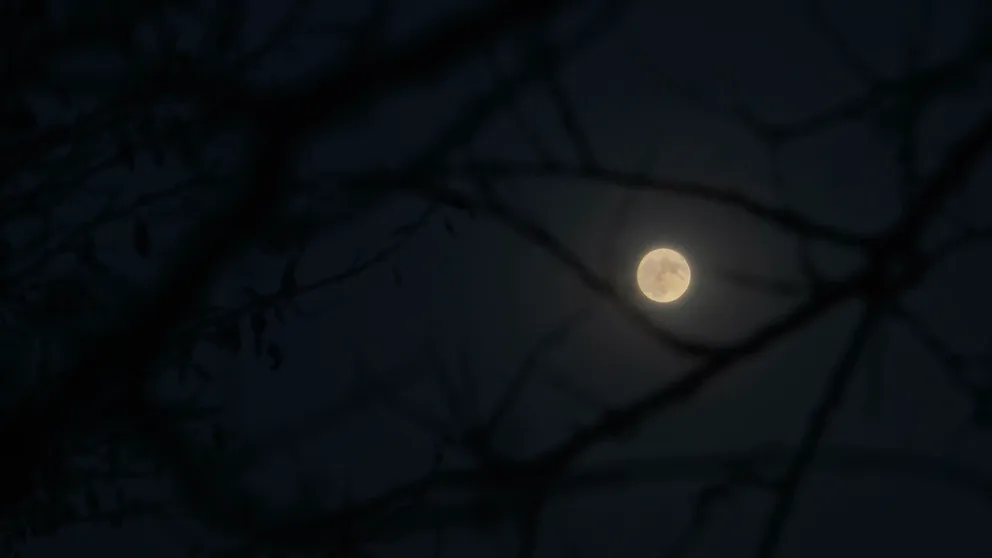The time has come for March’s full moon to light up the night’s sky, and if conditions are clear, it could be visible for several nights.
The full worm moon is slated to peak in illumination on Tuesday morning, at 7:40 A.M. EST, meaning large parts of North America will have to catch the height of the lunar event in hours and days before the peak.
NASA expects the moon will appear bright from Sunday evening and could last through Wednesday morning.
The Farmers’ Almanac said the moon got its nickname because the ground in the northern latitudes begins to soften during the month allowing earthworms to appear.
WATCH OUT FOR THESE ASTRONOMICAL EVENTS IN 2023

A 22 degree moon halo is spotted in London, Kentucky on Feb. 4, 2023.
(Johnnie Nicholson via Storyful / FOX Weather)
Similar to other folklore behind the naming of each month’s full moon, the nickname might be a bit of stretch because March is a still chilly month across large parts of North America, which would generally prevent sightings of worms.
According to Penn State’s extension office, the optimum temperature for an earthworm is between 50-60 °F, and many don’t tolerate freezing weather.
If Punxsutawney Phil or historical temperature data is to be believed, large swaths of the country still have several weeks left for the potential of frost and freeze events.
The South usually sees its last freeze in March, the Midwest follows suit in April and the Northeast and West are generally the last regions to wave goodbye to Old Man Winter, which happens in May or even later.

Average last freeze date
(FOX Weather)
Other names for the moon
If you don’t fancy the nickname of worm moon, there are at least a dozen other names that March’s full moon goes by.
The Farmers’ Almanac reports tribes in the northeastern U.S. referred to the moon as the crow, crust, sap and even the sugar moon.
NASA said it has heard Europeans refer to March’s event as the Lenten moon because it corresponds with the religious period of Lent.
In Sri Lanka, an island country off the Indian coast, every full moon is uniquely identified, and the event is a public holiday. The events mark key commemorations in Buddhism.
Many other religions and cultures have their own nicknames for the full moon and mark the occasion as a celebration or a reflection point.
SEE THE OBJECT HUMANS LEFT BEHIND ON THE MOON
Other planetary delights to watch out for
NASA says Venus and Jupiter, the solar system’s largest planet, will also dominate the night sky on Tuesday.
If viewing conditions are clear, watch the western sky, especially as evening twilight ends.
Earlier in the month, the planets were in conjunction, a term used to describe when features appear to be over the same point and eventually pass each other.

In the western sky, Venus and Jupiter are spotted to be near conjunction.
(NWS Grand Rapids / FOX Weather)
Even though they appeared close in the night sky, the second and fifth planets in our solar systsem were more than 400 million miles apart.
As the month progresses, the planets will quickly head in different directions – Venus is set to climb higher each night, while Jupiter will disappear as a viewable object until May.
7 TIPS ON HOW TO SHOOT THE MOON WITH A CAMERA
Calendar of next moon phases
After the full moon, the lunar body will wane into a third-quarter state by March 14 and reach a new moon status on March 21.
The next full moon won’t rise into the sky until Thursday, April 6, and it will be known as the pink moon.
Due to the moon taking around 354 days to complete a full 12 cycles, some years experience and additional full moon and 2023 is one of those years.
Thirteen full moons will grace the skies this year, with the extra sighting scheduled to happen in late August.

The moon takes about 29.5 days to complete a full cycle.
(NASA)
https://ift.tt/n54aZWA
Science

No comments:
Post a Comment